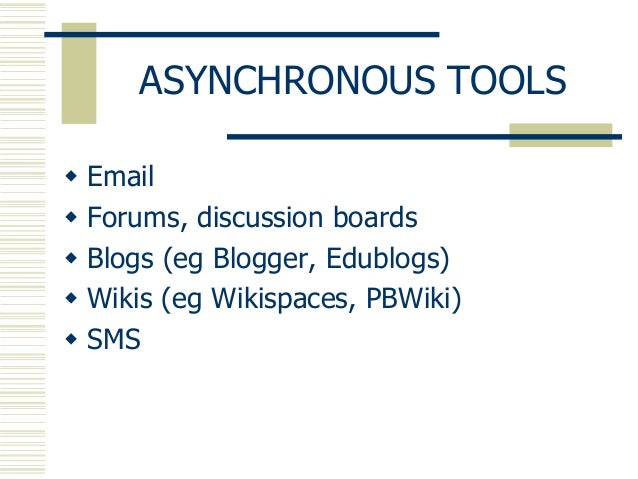👩👀 Directions: Find words or phrases standing for
the following acronyms with short descriptions.
- IT = information technology
- ICT = information and communications technology
- CAI = computer-assisted instruction
- CALL = computer assisted language learning
- WBI = Web based instruction
- CBI = Computer Based Instruction
- CMC = Computer Mediated Communication
- TELL = Teaching English Language Learners
- MUD = Multiple User Dialogue
- MOO = MUD Object Oriented
👉reference : http://nootaa.blogspot.com/2012/08/acronyms-related-to-computer-technology.html
🎈🎈🎈🎈🎈🎈🎈🎈🎈🎈🎈🎈🎈🎈🎈🎈🎈🎈🎈🎈🎈🎈🎈🎈🎈🎈🎈🎈🎈🎈🎈🎈🎈🎈🎈🎈
👱👀 Directions: Describe the following terms.
Synchronous Tools 😊
If using the “same time, different place” model of communication, some common barriers to implementation of synchronous tools are cost and bandwidth—not only cost and bandwidth on your end, as the individual teacher or the institution, but also to the students. This is especially true with conferencing systems; video/web conferencing requires equipment to deliver but also to receive. Although the benefits of real-time video conferencing are clear—it’s as near to a physical classroom environment as you can get—the software, hardware, and bandwidth necessary on both sides can be more cost-prohibitive than actually physically attending a class.
Some learning management systems/e-learning systems/virtual learning environments have integrated synchronous tools within the delivery platform—here I’m thinking specifically about Blackboard’s integrated chat and whiteboard features. Although there are still software, hardware, and bandwidth requirements for these tools, the requirements are likely not as cost-prohibitive as those required for video conferencing.
But when thinking about setting up synchronous discussion, don’t discount the basic, free, “old school” group instant messaging platform, ICQ.
Asynchronous Tools 😊


But when it comes to virtual communication in support of our classes, asynchronous communication is by far the more popular model if for no other reason than the barriers to implementation tend to be much lower—many of these tools are free and require minimal hardware and software. The drawbacks of asynchronous tools are that they are by nature less timely and efficient—they are asynchronous, after all. However, planned excursions with asynchronous tools can turn into synchronous events. In other words, if students and instructors all happen to be logged in to a discussion board, conversation can happen in near-real time.
Common examples of “different time, different place” tools include:
- Discussion boards: whether integrated into your online learning environment or not (such as Google Groups), well-managed discussion board can produce incredibly rich conversations about the topics at hand.
- Blogs: my personal favorite, as not only are the students discussing with one another (and the instructor), but they’re learning something about writing for a wider audience who may or may not be listening in. The open nature of blogs also allows for communication between students in other classes at other institutions who are studying the same topics. You might have to make “comment on blogs” count for a grade in order for some students to do it, but such is the nature of the beast—those students probably wouldn’t talk in class, either.
- Social Networking Sites: Facebook and Twitter can play important roles in your asynchronous communications strategy. Facebook pages for a class can be the destination for up-to-date information about the course, without your students having to friend you (or even one another). Twitter, and Twitter lists, can be useful sites of asynchronous discussion, although not in the threaded format that one is used to seeing in a discussion board setting.
- E-mail/Listservs: Some people consider mailing lists to be quaint relics of a previous technological age, but it’s hard to argue with the fact that they still work: an e-mail based discussion list does afford one the ability to carry on threaded discussions in a private environment, yet outside the confines of a managed system (for discussion boards). In fact, Google Groups (referenced above) is a threaded discussion board that can also take place via e-mail, putting a different twist on the typical concept of the listserv.












0 ความคิดเห็น:
แสดงความคิดเห็น